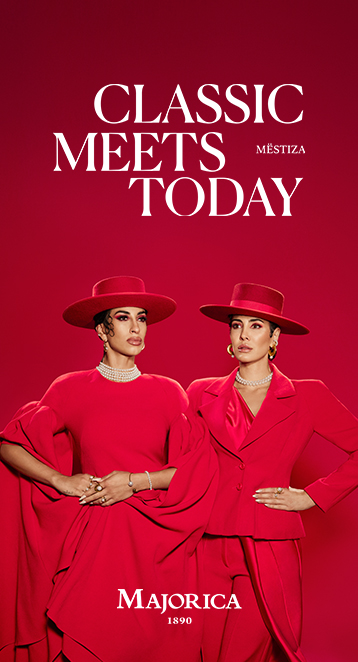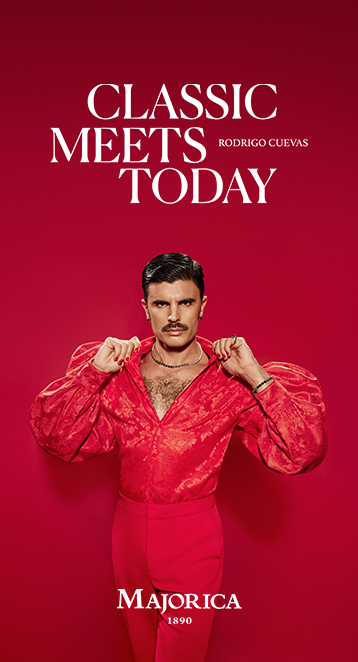 |
INTERNATIONAL. The importance of good customer service and a deep understanding of cultural differences were key themes at the 2008 Luxury Briefing Conference, which gathered together the movers and shakers of the luxury goods world to discuss ‘Emerging luxury: Maximising the long term potential of new markets’.
The proceedings took place at the May Fair Hotel in London on 20 November 2008 and spelled out the opportunities that remain open to brands in the emerging BRIMC (Brazil, Russia, India, Middle East and China) markets in financially challenged times.
Luxury goods market: Facts and figures
Leading executives acknowledged the gravity and uncertainty surrounding the global financial situation but the overall message was clear: the emerging BRIMC markets will continue to grow in the next few years, albeit more slowly than before.
Offering a veritable blizzard of facts and figures on the luxury goods market, Accenture Managing Partner Richard Wildman said luxury goods sales were currently estimated to be around $250 billion per annum globally. Consumers from the emerging markets have driven the bulk of sales in recent years, averaging around 23% of the total figure from 2003 to 2008; in comparison, developed markets were flat or declining. By 2010, some 40% of total luxury sales could be generated by BRIC market consumers.
While the US and Japan were still major markets for luxury brands, he revealed the relative luxury market growth rates for Russia – forecast to grow fourfold by 2015; China, sixfold, from $2 billion to $11.2 billion; and India, where the luxury market is set to jump tenfold.
Noting that the current economic situation was uncertain, he said the luxury goods business had been profitable in terms of EBIT return over recent years and that this could continue.
Wildman spoke of a “two-speed world” in which global luxury brands were now balancing the contrasting demands of a downturn at home and rapid growth abroad. At home, luxury brands would seek continual innovation in core and selected growth areas, while managing margin pressures.
He observed that each emerging market was unique and luxury brands’ future expansion and brand building would depend on a deep understanding of consumer preferences, lifestyle and culture, as well as an ability to sense how the market will develop.
Looking at specific market opportunities, Wildman said poor infrastructure still held back India and Brazil, while South Korea still had good potential growth given its resemblance to the Japan retail market.
Wildman noted that India was “a longer-term bet for success” for luxury retail than Russia or China because of the younger consumer group that made up its affluent and emerging middle class. He added that in China, more than 700 million people are aged under 35 and, according to research, some 90% of sales are made to consumers under the age of 44.
Luxury brands were deploying different tactics from those used in developed markets to target these young consumers – for example 0% finance options, so that shoppers could spread their payments over a given period.
Wildman also revealed the startling fact that one retail outlet was opening every minute in China, but added that outside of the major cities, such as Shanghai and Beijing, first-mover advantage could still be significant.
Another consideration is that the Chinese are increasingly travelling abroad and large numbers of luxury purchases are made during those trips (up to 80% of purchases), he said.
Good customer service is key
Several speakers noted that consumers in emerging markets were savvy and knowledgeable and were already beginning to demand customer service standards at least as good as – or even superior to – current international levels. They emphasised the importance of good customer service particularly during a global financial crisis.
Sheikh Majed Al-Sabah cheered up the conference attendees with a very upbeat and bullish speech. Al-Sabah, who is a member of the Kuwaiti royal family, owns the upscale Villa Moda department stores in the Middle Eastern domestic market.
Al-Sabah asserted that the global financial crisis had not affected him and then explained how Villa Moda had partnered with a number of creative (non-retail specialist) architects such as Marcel Wanders to open multi-brand department stores in the Middle East, each distinct in terms of its location, interiors and retail offering.
“I cater mostly to locals – international tourists are sunseekers and just want to go to the beach – and they demand extremely high levels of service,” he told the audience.
Among the concierge-level services he offers are arranging to have gifts delivered to clients’ friends and family, and making alterations to designer clothes – even those purchased elsewhere. “I sometimes take 20% of my store’s collections by private jet into palaces for mini trunk shows with two personal shoppers,” he said.
Luxury “fatigue” among consumers
Several speakers used the word “fatigue” during their presentations in relation to consumers’ attitudes towards the luxury goods industry. They included Asian business tycoon Sir David Tang, founder of luxury fashion brand Shanghai Tang, and now a director of Tommy Hilfiger.
During his travels, Tang had observed that shopping malls were beginning to look the same the world over, offering the same luxury selection of brands. “It’s all getting very boring,” he said.
He pointed out that the newly affluent Chinese “want to blow their money” because they have never experienced such wealth before and “you can make a killing in China if you get it right” but he stressed that the Renminbi was unconvertible and posed the question: “Have you [luxury brand owners] repatriated any money you have made in China? Have you got a receivable?”
Somewhat despairing of the state of the luxury goods industry and its increasing democratisation, Tang called on luxury brands to return to creativity, personalisation and craftsmanship – as well as value for money – in new product development, to maintain consumer interest.
Awareness of cultural differences
Sensitivity to, and awareness of, cultural differences was a core conference theme brought up by several speakers.
Imran Amed, founder and editor of The Business of Fashion.net, said Indians were very proud of their cultural heritage and women loved to wear brightly coloured saris on festive and traditional occasions. “Where does that leave Armani’s evening gowns in understated colours?” he asked brand owners to consider, while commenting on the inappropriateness of selling European-style grey and black clothes in a country like India, where striking colours are part of the culture.
He noted that several famous designer brands were producing national garments, such as the Middle Eastern dishdasha, for certain markets.
Reaching the new luxury consumer
Brands need a clear identity in order to communicate successfully with consumers, and this becomes more important in emerging markets, according to Paul McGowan, CEO (Global Clients) of the Added Value Group. “You have to flex [your brand identity] in emerging markets,” he said. “Each market is at a different stage of development and brands retain a sense of who they are in different markets.”
Alistair Green, Planning Group Head of international advertising agency Bartle Bogle Hegarty, observed that collective societies in emerging markets were sensitive to social context. Therefore, in advertisements, they see each individual object, rather than the overall meaning or message of the ad. “Chinese consumers react to casting, styling and location before they react to the idea,” he said. “They look at what kind of people are in the ad, and ask themselves whether they identify with those people, in the way they look and dress.”
Green concluded that brands were “social signifiers” in emerging markets and that because these societies were group-led rather than individual, as in the West, the word ‘we’ not ‘I’ was therefore more appropriate. “People in Asia will say: “˜We love new things’,” he said.
Celebrities are used to endorse brands as a “Western-approved stamp of authority”, according to Imran Amed, who noted the successful use of Jude Law’s image inside Dunhill’s new Shanghai store. Advertising images should be true to the DNA of the brand, he added, as there were instances where this had not been the case.
Bollywood movie stars are used extensively and successfully in India, and are increasingly seen as global ambassadors, including Aishwarya Rai, who is now the face of L’Oréal and Longines in their international ad campaigns.
Amed said marketing in India was about word of mouth, as Indians enjoy shopping with their friends and family. “In India it’s all about telling someone about a product or an experience,” he said, alerting luxury brands to the need to make space in-store for these family groups.
Some ads using celebrities have a global as well as local impact, said Amed, detailing Fendi’s The Great Wall of China fashion show last year and the recently held The Art of Dior exhibition in Beijing that celebrated Chinese contemporary artists.
Guillaume Brochard, co-founder and CEO of Qeelin, a luxury Chinese jewellery brand, said he was taking a low-key approach to marketing and promotions and questioned the effectiveness of “mass-luxury events” costing millions of Euros and attended by hundreds of celebrities and VIPs. His own approach favoured small dinners or lunches with opinion-formers, such as journalists. It was important to invite online media to these events, he added, as his company had seen an upswing in the number of enquiries being made online in the past 12 months.
The Internet is beginning to play an increasing role in reaching the luxury consumer in Asia. Priya Paul, Founder of the Park Hotels boutique-hotel group in India, said many online hotel bookings were being made online. However, she believed that, from her own observations, luxury goods brands were not deploying e-commerce strategies in India; she felt that websites existed to advertise a brand, not to actually sell the goods. But she believed that situation would change.
Watches and jewellery: potential high-growth categories
The importance of the watch category to customers from Asian countries came to the fore during the conference proceedings, as the majority of Asian luxury consumers are male and want to demonstrate their wealth and status.
Two telling videos were presented: one showed an ordinary-looking Chinese man waxing lyrical about his collection of ten watches, while another filmed a Russian woman discussing the heritage and image of a certain high-end Swiss watch brand versus the diamond-set watches produced by the French luxury jewellery houses.
Several speakers highlighted jewellery as a big potential growth area. Culturally, Indian women buy a lot of jewellery, but most of it is unbranded, resulting in a big opportunity for luxury goods houses, according to Imran Amed.
Luxury goods consultant Claire Kent listed jewellery among the six opportunities she had identified in the current luxury market. The other under-exploited areas, in her view, were: men’s shoes; men’s grooming; eco luxury; African culture, influenced by US President-elect Barack Obama; and high-end food, particularly healthy food that could be eaten on the go.
MORE STORIES ON LUXURY BRIEFING
Luxury Briefing conference to focus on the travel market – 03/10/03








